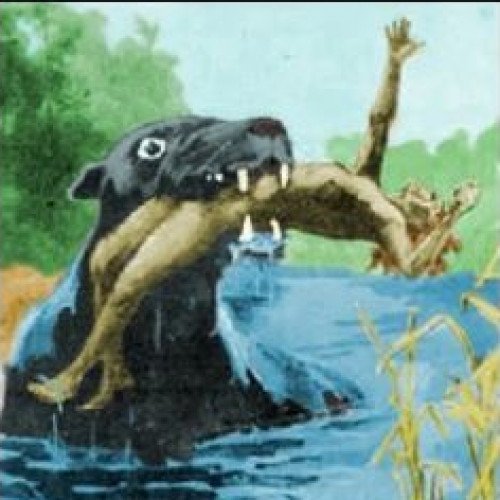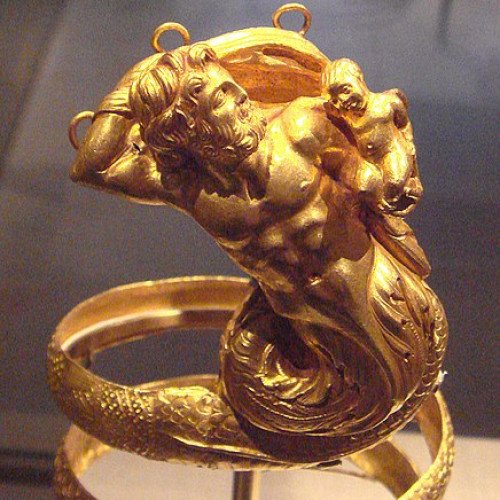Bunyip VS Triton (mythology)

Bunyip
The bunyip is a large mythical creature from Australian Aboriginal mythology, said to lurk in swamps, billabongs, creeks, riverbeds, and waterholes. The bunyip was part of traditional Aboriginal beliefs and stories throughout Australia, while its name varied according to tribal nomenclature. In his 2001 book, writer Robert Holden identified at least nine regional variations of the creature known as the bunyip across Aboriginal Australia. The origin of the word bunyip has been traced to the Wemba-Wemba or Wergaia language of the Aboriginal people of Victoria, in South-Eastern Australia. Europeans recorded various written accounts of bunyips in the early and mid-19th century, as they began to settle across the country.
Statistics for this Xoptio

Triton (mythology)
Triton (; Greek: Τρίτων Tritōn) is a Greek god of the sea, the son of Poseidon and Amphitrite, god and goddess of the sea respectively. Triton lived with his parents, in a golden palace on the bottom of the sea. Later he was often depicted as having a conch shell he would blow like a trumpet. Triton is usually represented as a merman, with the upper body of a human and the tailed lower body of a fish. At some time during the Greek and Roman era, Triton(s) became a generic term for a merman (mermen) in art and literature. In English literature, Triton is portrayed as the messenger or herald for the god Poseidon. Triton of Lake Tritonis of Ancient Libya is a namesake mythical figure that appeared and aided the Argonauts.